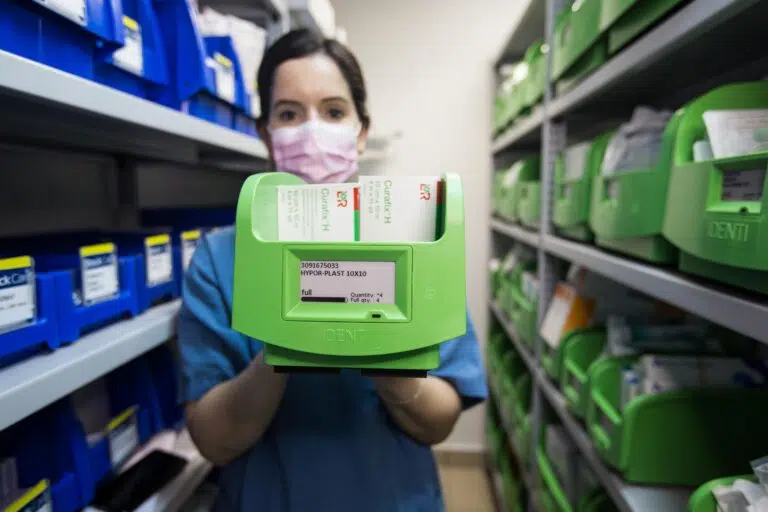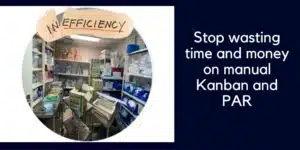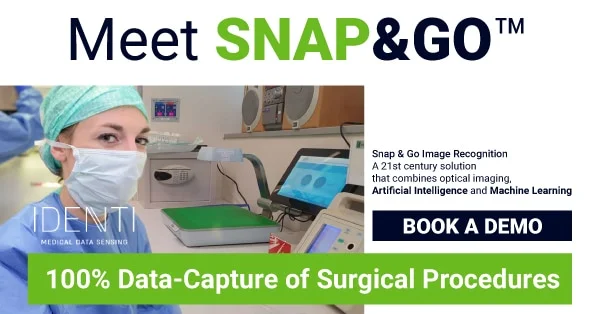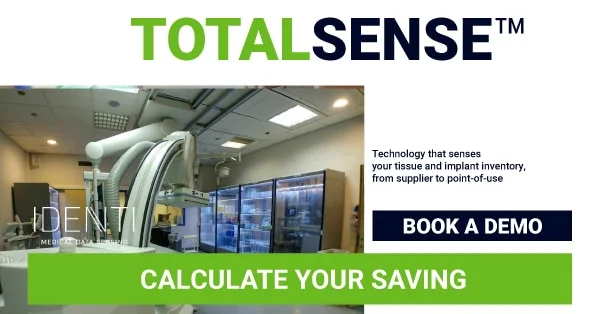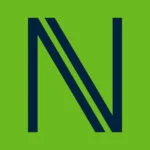What’s inside:
Managing medical supplies in nursing units is far from straightforward, but automation is starting to transform department storerooms into digital supplies’ spaces.
This blog looks at:
- The challenges of inventory management in nursing unit
- The three pillars of optimal nursing unit inventory management
- The power of data in managing medical supplies in clinical departments
- How automation is improving medical supply management in nursing units
- How patient safety and care is optimized by more efficient supplies’ management.
Efficient and timely medical supplies replenishment is a crucial element of patient care. Departments such as OBGYN, Gastro, Ophthalmology or General Surgery need well-organized and time-efficient management of medical consumables. Traditionally, nurses have played a central role in inventory management, but the demands on nursing staff are immense and supply management tasks pull them away from patients care.
So, how can we optimize medical supplies management without overburdening, nursing staff?
This article delves into the growing trend of automating medical supplies management in hospital nursing units.
Challenges in Nursing Unit Inventory Management
Imagine a bustling nursing unit where the whole nursing team are accessing supplies, and where different individuals are responsible for placing restock orders – as supplies get depleted across multiple shifts. In such a dynamic environment, monitoring and managing bulk supplies and consumables can be complex.
Daily challenges will include:
- Locating the items needed in overcrowded hospital storerooms.
- Determining when restocking is required and understanding whether an order already been placed.
- Managing deliveries and restocking during a busy shift.
These challenges can lead to delayed care, wasted resources, and increased costs. Improving the management of medical consumable on the department is perfectly achievable, so let’s look at the basics that need to be in place for this to happen.
Three pillars of optimal nursing unit inventory management
Getting the foundations right is vital for optimized medical consumable management in nursing units. There are three essential pillars to success:
- Reducing time nurses spend managing consumables: It’s crucial to reduce the over-reliance on nursing staff to manually manage consumable supplies. Freeing up caregivers from inventory-related tasks allows them to dedicate more time to patient care.
- Introducing automation: Automation is the key to efficient inventory management. Solutions such as automated Kanban and PAR systems results in the automated monitoring of inventory levels, computer-generated purchase orders, and clear digital information on the status of each product. This reduces the risk of human error and streamlines operations.
- Data-driven decision making: To optimize inventory, we must gain full visibility and understand usage patterns. By collecting and analyzing data, materials management can determine the ideal PAR (Periodic Automatic Replenishment) level for each item and also tackle issues such as wastage and cost management. Data-driven decisions lead to better, more cost-effective medical supply management.
There are many case studies showing the impact of automated Kanban and PAR systems on supply chain efficiency in clinical departments.
The power of data in nursing unit inventory management
In the modern healthcare landscape, data is invaluable. Accurate, timely data supports several critical aspects of nursing unit inventory management:
| Benefits | Description |
| Efficient Resource Utilization |
|
| Cost Reduction |
|
| Enhanced Patient Care |
|
| Data-Driven Decision Making |
|
| Improved Supplier Relations |
|
| Waste Reduction |
|
Automation not only enhances the operational efficiency and financial health of the clinical department, but also contributes to improved patient care by ensuring the continuous availability of essential supplies.

Medical supply automation in nursing units improves patient care
Efficient inventory management is essential for nursing units. By reducing reliance on manual processes, introducing new hospital Kanban and PAR automation, and embracing data-insights, nursing units can transform their inventory management practices.
The benefits of medical supply chain automation extend beyond cost savings and operational efficiencies and have a direct impact on patient care. This is due to the continuous availability of supplies, as well as increased quality of care, as nurses reduce their supply chain responsibilities.
The power of automating the management of consumables and bulk medical supplies in hospital departments cannot be underestimated.
It’s time for nursing units to embrace automation to lower costs, enhance patient care and take a heavy burden off of the shoulders of busy nurses.

Find out about Kanban and PAR automation options for your nursing units. Options include:
- Wireless, Weight-Based PAR Bins
- Digital Kanban Tags
- RFID inventory bin tags
Contact us to discuss the role that automation can play in departmental supply chain efficiency.

